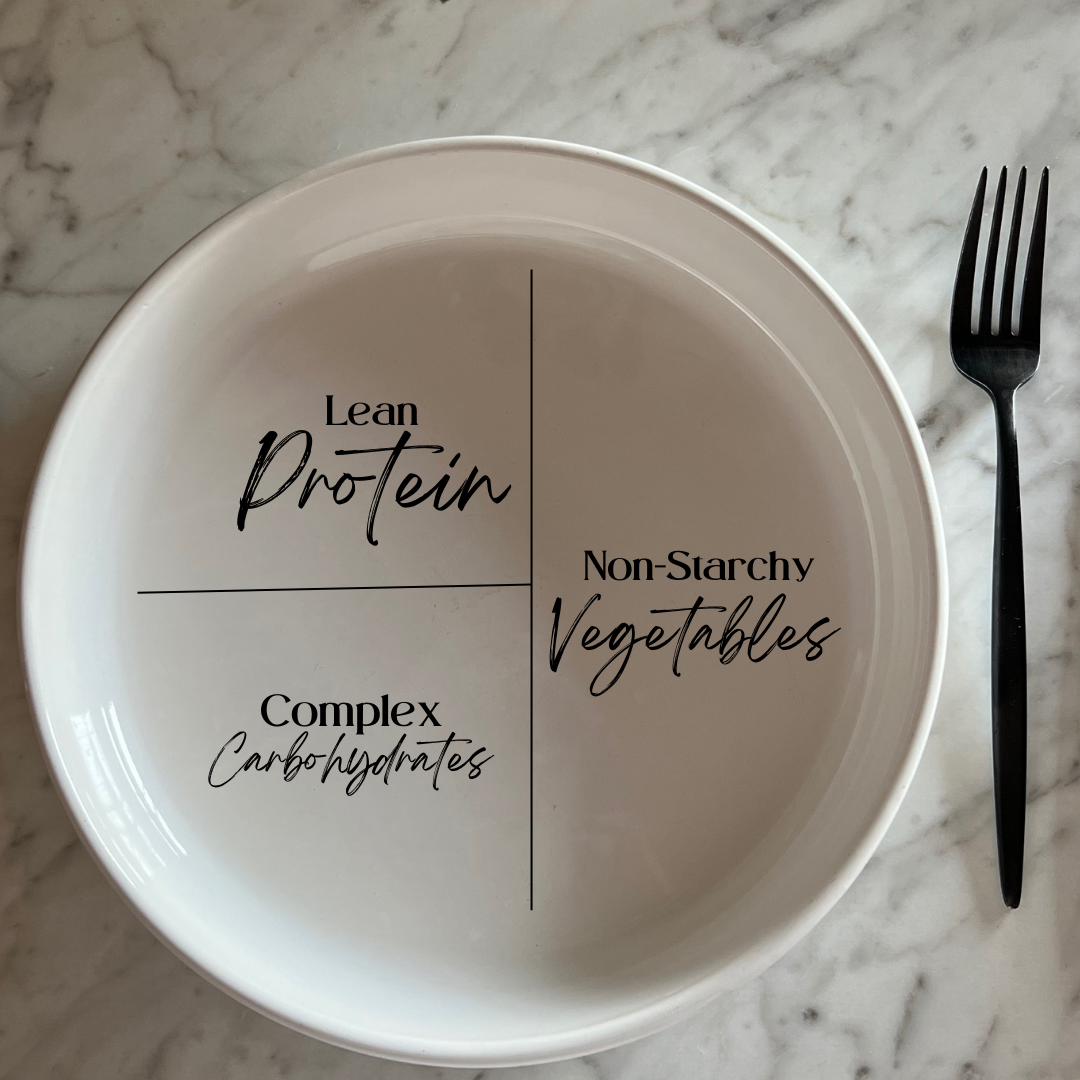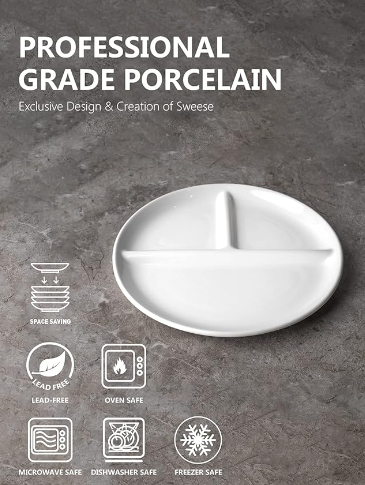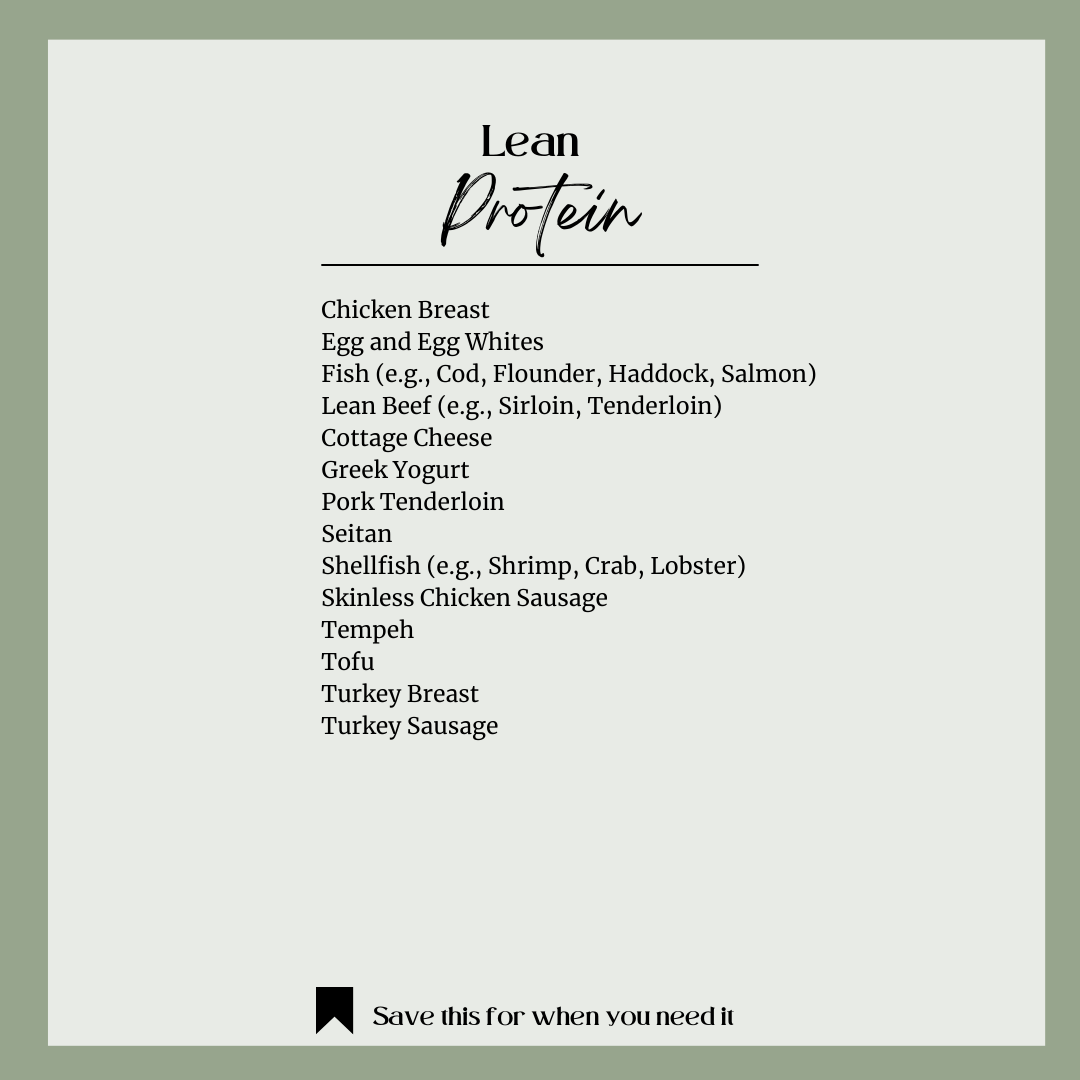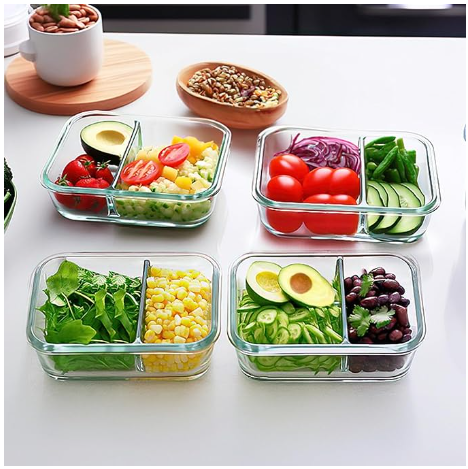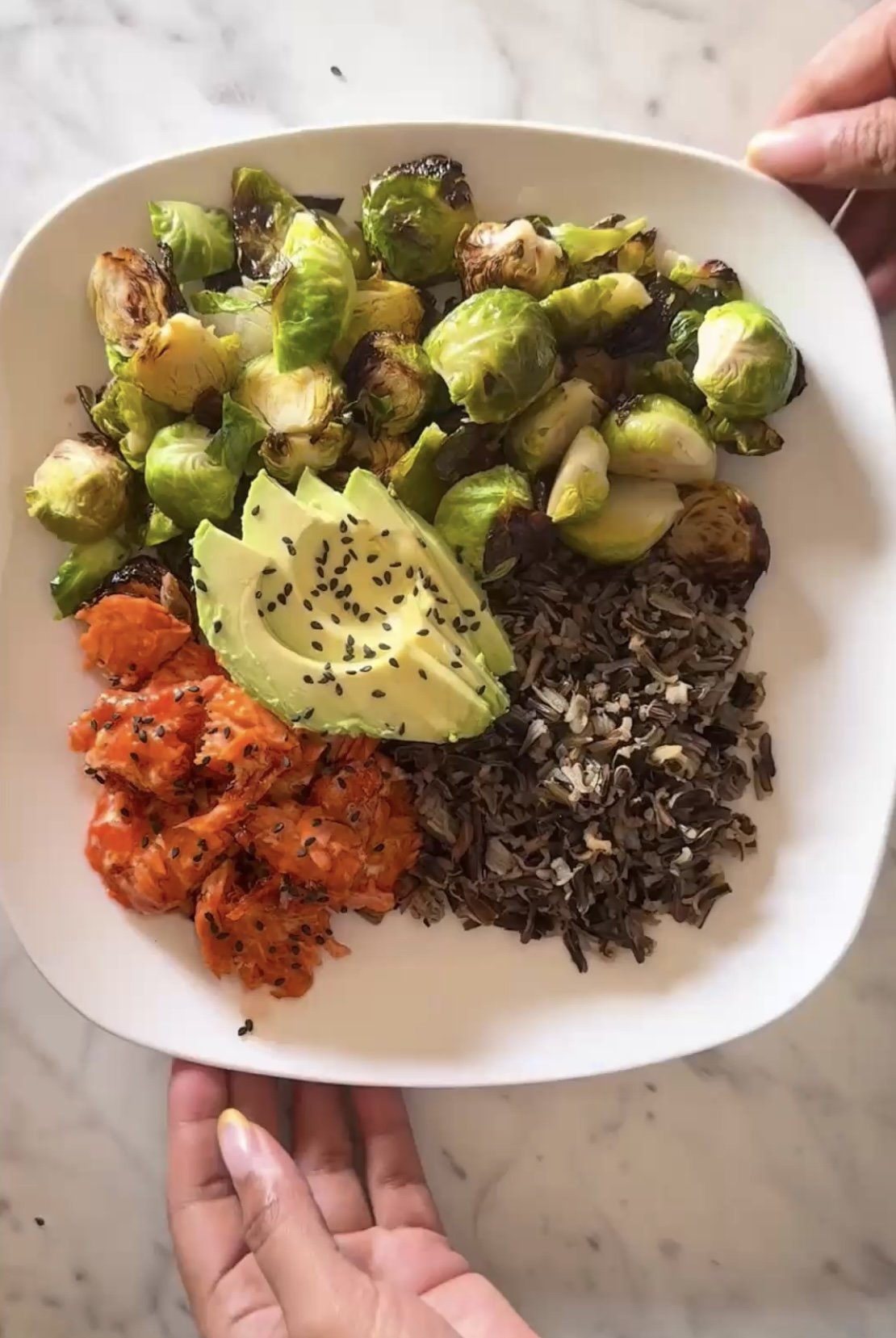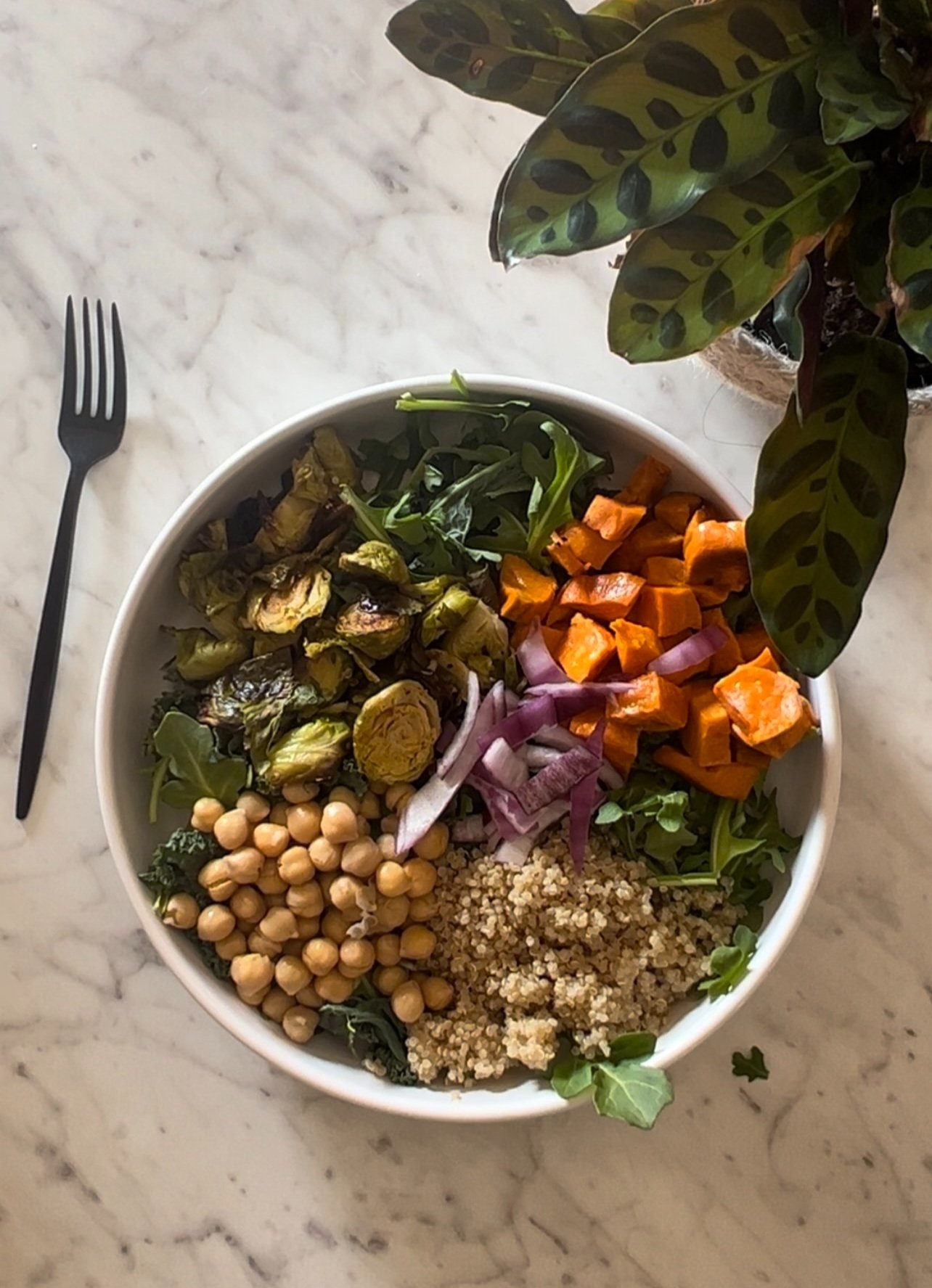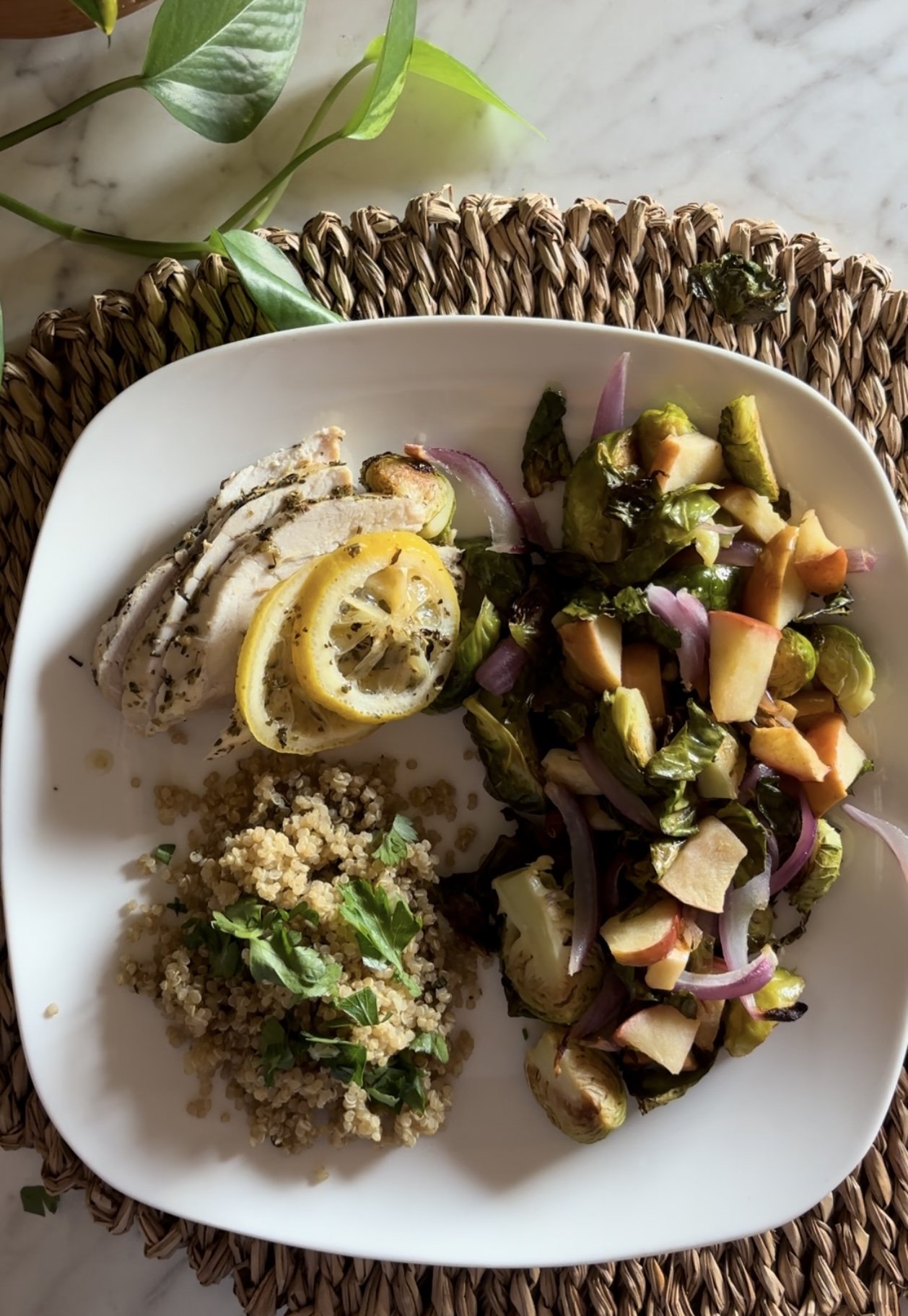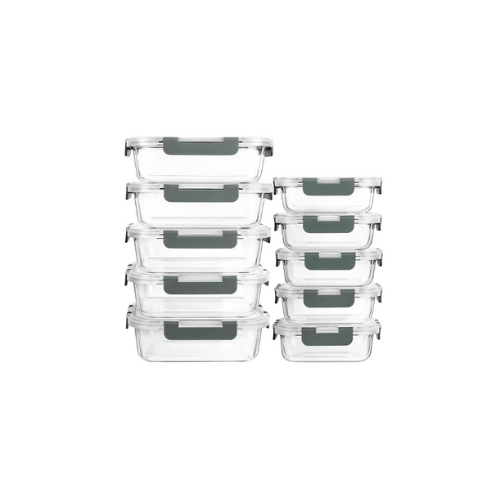Sustainable Weight Loss With A Balanced Diet & no Calorie Counting
Hello Brightly Nourished Familia!
Let’s talk weight loss without the need to count calories. How? By learning to balance your nutrients every time you sit down to eat. When it comes to nutrition for weight loss, balance is essential. It's not just about cutting calories but ensuring that your diet is rich in essential nutrients. A balanced approach involves consuming a variety of foods that provide the right mix of vitamins, minerals, proteins, fats, and carbohydrates. This helps maintain energy levels, supports metabolic health, and promotes overall well-being, making it easier to achieve and sustain your weight loss goals.
Metabolic health refers to how well your body processes and uses energy from the food you eat. It involves maintaining healthy levels of blood sugar, cholesterol, blood pressure, and body fat. Good metabolic health means your body efficiently converts food into energy, keeping your organs and systems functioning properly.
When we think of losing weight, one of the first things that comes to mind is eating less. However, successful weight loss involves more than just reducing food intake; it’s about creating and maintaining a caloric deficit in a balanced and sustainable way to make sure our body performs efficiently while we aim to achieve our goals.
Why is a Caloric Deficit Important for Weight Loss?
A caloric deficit occurs when you consume fewer calories than your body needs to maintain its current weight. Essentially, it's the state where your energy intake from food and beverages is less than the energy your body expends through basic metabolic functions (AKA BMR- the essential processes your body performs to maintain life, such as breathing, circulating blood, and regulating temperature.) and physical activities.
Weight Loss: The primary reason a caloric deficit is important is for weight loss. When the body is in a caloric deficit, it must find alternative energy sources to meet its needs, leading it to burn stored fat.
Fat Reduction: By consistently maintaining a caloric deficit, the body gradually reduces fat stores, resulting in weight loss and improved body composition.
Metabolic Health: Achieving a caloric deficit can improve metabolic health markers, such as blood sugar levels and cholesterol, which are often linked to excess body fat.
Too Many People Misinterpret What it means to be in a Caloric Deficit
When coaching my clients, they often start off wanting to drastically decrease their calorie intake to achieve their weight goals. Who can blame them? For many years, we've been conditioned to believe that eating less is the key to weight loss. This widespread belief has led many to adopt extreme dieting practices that are not only unsustainable but also potentially harmful to their health.
However, it’s important to understand that while reducing calorie intake is a component of weight loss, it’s not just about eating less. Effective weight loss involves creating a balanced caloric deficit that provides adequate nutrition. Drastically cutting calories can lead to muscle loss, and metabolic slowdown, nutrient deficiencies, making weight loss harder over time.
My approach to coaching focuses on helping clients understand the importance of a balanced diet and gradual, sustainable changes. Instead of extreme calorie reduction, we work on making healthier food choices, incorporating nutrient-dense foods, and adopting habits that support long-term health and well-being. This way, clients not only achieve their weight goals but also improve their overall health and maintain their progress.
What is a Balanced Diet on a Caloric Deficit?
While maintaining a caloric deficit is key to losing weight, the quality of the calories you consume is equally important. A balanced diet ensures that, even when you're eating fewer calories, you're still providing your body with the nutrients it needs to function optimally.
Macronutrients: Protein, Carbohydrates, and Fats
Protein is crucial for building and repairing tissues and can also help with satiety, making you feel fuller longer.
Carbohydrates are the body's main source of energy. Opt for complex carbs like whole grains, fruits, and vegetables, which provide lasting energy and essential nutrients.
Fats are vital for hormonal function and the absorption of vitamins, not to mention so important for brain health. Focus on healthy fats found in foods like avocados, nuts, seeds, and olive oil.
Micronutrients: Vitamins and Minerals
A variety of fruits, vegetables, lean proteins, and whole grains will help ensure you receive a broad range of essential vitamins and minerals. These nutrients support everything from bone health to immune function.
Other things to consider:
Hydration
Drinking plenty of water is essential for weight loss as it aids in metabolism and helps prevent overeating by keeping you full between meals.
Portion Control
Learning to control portions can be more effective than counting calories for some people. Use smaller plates, and listen to your body's hunger cues to avoid overeating. I have my clients use the Healthy Balance Plate Method when they are not interested in counting calories and have great successes building healthy habits in the kitchen.
To Count Calories or Not to Count Calories?
Counting calories is not for everyone. It can be a lot of work, as it requires not only the habit of tracking every bite but also the effort to build healthier eating habits simultaneously. This dual task can be overwhelming and discouraging for many people.
Instead of counting calories, consider using the Healthy Balanced Plate Method, which offers a simpler, more intuitive approach to healthy eating.
The Healthy Balanced Plate Method
The Healthy Balanced Plate Method is a simple and effective way to plan and portion your meals to ensure a balanced and nutritious diet. It involves visually dividing your plate into specific sections to include a variety of food groups, which helps in managing portion sizes and promoting a well-rounded intake of nutrients. Here’s how it works:
½ of the Plate - Non-Starchy Vegetables and Fruits:
Vegetables: Fill half of your plate with a variety of colorful, non-starchy vegetables such as leafy greens, carrots, bell peppers, broccoli, and tomatoes. Vegetables are rich in vitamins, minerals, fiber, and antioxidants.
Fruits: Include a small portion of fruits for added vitamins, minerals, and natural sweetness. Aim for fresh, whole fruits rather than fruit juices or canned fruits with added sugars.
¼ of the Plate - Proteins:
Choose lean sources of protein such as poultry, fish, beans, lentils, tofu, eggs, or low-fat dairy. Protein is essential for muscle repair, growth, and overall bodily functions.
¼ of the Plate - Starchy Veggies or Complex Carbohydrates:
Fill the remaining quarter of your plate with starchy vegetables or Complex Carbohydrates. Opt for whole grains such as brown rice, quinoa, whole wheat pasta, or whole grain bread. These foods provide essential nutrients and fiber, which aid digestion and help you feel full longer. Starchy vegetables like sweet potatoes, corn, and peas are also excellent choices, offering additional vitamins and minerals while adding variety to your meals.
Healthy Fats:
Include a small amount of healthy fats in your meal, such as a quarter avocado, or a tablespoon of nuts, seeds, or olive oil. Healthy fats are important for brain function, hormone production, and overall health.
Visualize your plant in this fashion every time you sit down to eat. Ask yourself, do I have enough veggies? Where is my protein? Get used to eating this way every time you sit down to eat to ensure you're getting a balanced diet.
Need some help staying on track?
Try the Portion Control Plates to help you get into the habit of eating balanced and healthy.
Benefits of the Healthy Balanced Plate Method
Balanced Nutrition: Ensures you receive a variety of essential nutrients from different food groups, emphasizing whole foods and minimizing processed foods.
Portion Control: Helps manage portion sizes, which can aid in maintaining a healthy weight. It’s recommended to use a 9-inch plate to help visually guide your portions, ensuring that you don’t accidentally serve yourself too much food.
Simplicity: Easy to understand and implement, making it accessible for everyone.
Flexibility: Can be adapted to different dietary needs and preferences, including vegetarian, vegan, and gluten-free diets.
Sustainable Habits: The Healthy Balanced Plate Method promotes sustainable eating habits by encouraging a balanced and varied diet. It supports long-term adherence to healthy eating practices without the need for constant monitoring and tracking.
Practical Tips for Using the Healthy Balanced Plate Method
Get Organized
Start by identifying which lean proteins, non-starchy vegetables, starchy vegetables and fats you want to include in your meals. Plan to rotate these every few days or week to keep your diet varied and interesting. I recommend printing out the following list and hanging it on your fridge for easy reference. Always keep a grocery list handy so you know exactly what you need when you go shopping, ensuring you stay on track with your healthy eating goals. For my favorite organization tools, check out the links below.
Get Organized!
For my favorite organization tools, that help me stay on track week after week, check out my Amazon Storefront:
Meal Preparation
Plan your meals around the plate method. When grocery shopping, select a variety of starchy and non-starchy vegetables, fruits, lean proteins, and whole grains to ensure you have all the necessary components for balanced meals. Looking for meal prep containers? Here are my personal favorites that are easy to wash, store, travel with, and are durable.
Make it Simple and Easy
Simplify your cooking routine by baking, steaming, or air frying your meals. These methods are not only easy but also healthy, helping you retain the nutrients in your food while minimizing the use of added fats and oils. Baking allows you to prepare large batches with minimal effort, steaming preserves the natural flavors and nutrients, and air frying provides a crispy texture without excessive oil.
To make your cooking experience even more effortless, check out my favorite kitchen equipment that makes meal preparation a breeze. From high-quality baking sheets and steamers to versatile air fryers, these tools will help you create delicious and nutritious meals with ease.
Balanced Eating Does Not Have to be Complicated
Adopting the Healthy Balanced Plate Method is a powerful strategy for achieving a balanced and nutritious diet without the stress and complexity of counting calories. This approach encourages a positive relationship with food, emphasizing the importance of variety, portion control, and nutrient-rich choices. By focusing on whole foods and minimizing processed foods, you support the development of healthy, sustainable eating habits that can be maintained long-term.
Balancing caloric intake with nutrient-dense foods not only aids in weight loss but also enhances overall health and well-being. This method ensures that you receive essential nutrients to fuel your body, maintain energy levels, and support metabolic health. It's about creating a lifestyle that promotes health, rather than following a restrictive diet that is difficult to sustain.
Remember, the ultimate goal is not just to lose weight but to improve your overall health and well-being. By adopting a balanced diet, you pave the way for a happier, healthier you, ensuring long-term success in maintaining your weight and enjoying a higher quality of life. Embrace the journey towards a healthier lifestyle, and let the Healthy Balanced Plate Method guide you to lasting wellness.
Ready to transform your eating habits and achieve lasting weight loss? Start implementing the Healthy Balanced Plate Method today! For more tips and personalized advice, subscribe to our newsletter, join our community of health enthusiasts dedicated to living their best lives, and follow us on Instagram @brightly.nourished.
Here's to a healthier, happier you!
More Holistic WELLNESS on the blog:
Have you check out our healthy RECiPES!
FOLLOW ALONG FOR MORE!!
Amazon Storefront
Shop My Handpicked Favorites for a Brighter Nourished Life






